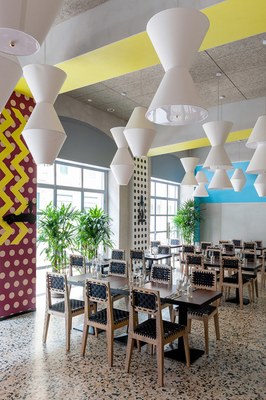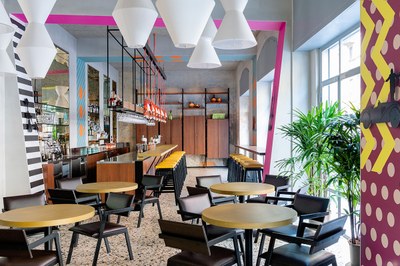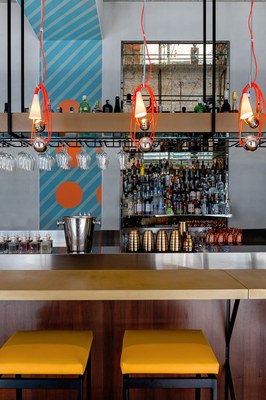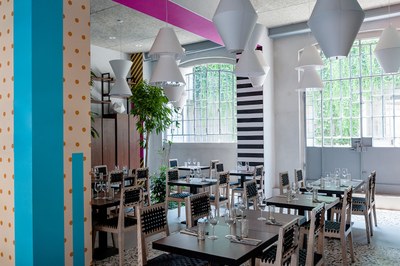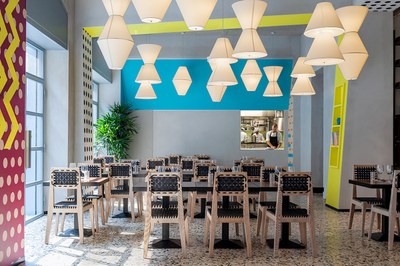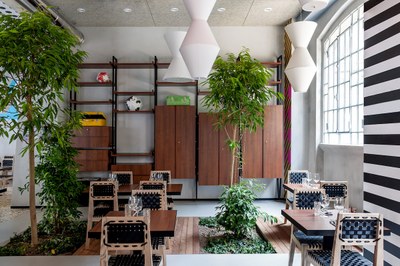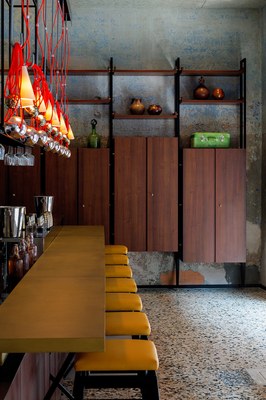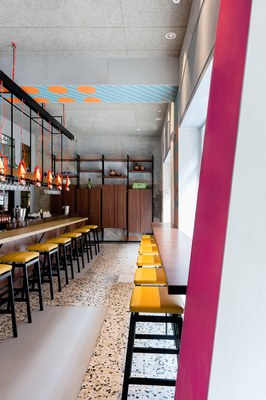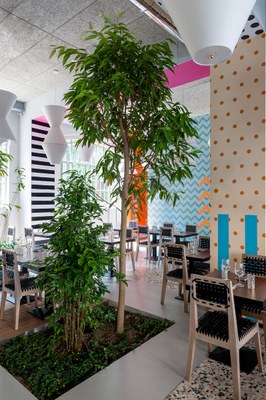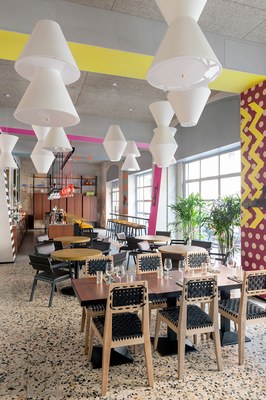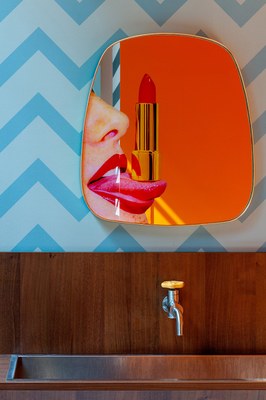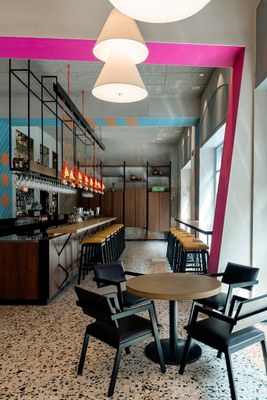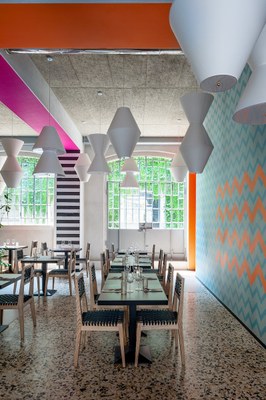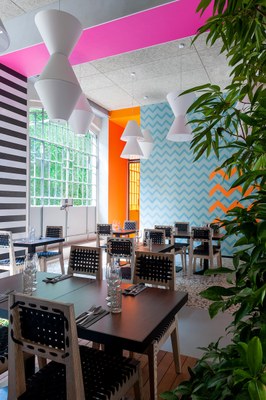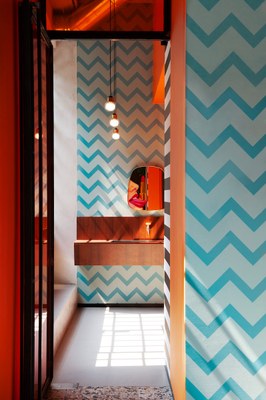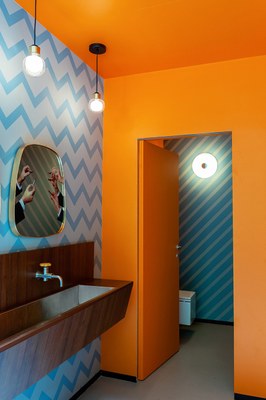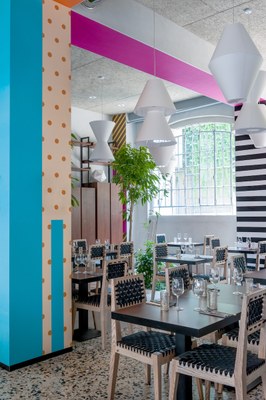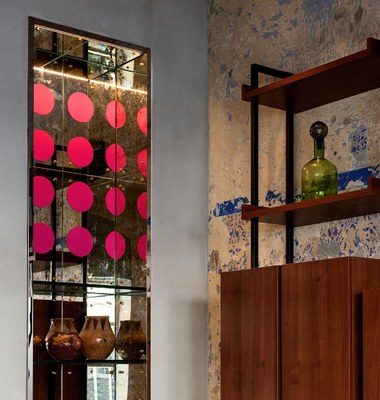Spicais the name of the new restaurant of the star-chefs Ritu Dalmia and Viviana Varese inaugurated in the heart of the Milanese district of Porta Venezia: a restaurant that embraces diversity and internationality, offering a gastronomic journey through four geographical areas (Southeast Asia, the Indian subcontinent, Europe and America).
Journey and convivialityare the two fundamental elements that are reflected from the kitchen to the interior design thanks to the project by Vudafieri-Saverino Partners, the architecture studio based in Milan and Shanghai which boasts exceptional experience in developing new restaurant concepts.
The architects Tiziano Vudafieri and Claudio Saverino have designed a space capable of surprising with its unusual mix of Asian suggestions and homage to the masters of 20th century Milanese design: the result is a lively and colourful restaurant that reflects the vibrant atmosphere of Porta Venezia and its dynamic and young public.
In their citations of Milanese tradition, Vudafieri-Saverino Partners have combined the freedom and radical design of Ettore Sottsass, with his deep passion for India, and the elegance and rigour of the modern movement of Franco Albini: two distinct worlds that interact harmoniously in the restaurant and are reflected respectively in the architecture and in the furnishings.
The homage to Sottsass is immediately evident in the radically free style of portals, which defines the architecture of the restaurant and marks out the spaces: in contrast to the neutral framing of the ceilings, these elements are characterized by a wallpaper with colored patterns and fluorescent geometric inserts, also evoking the stratification of cultures and the richness of colors of Asian countries.
The furnishings are clearly reminiscent of the great Milan masters of the ‘50s and ‘60s, first and foremost Franco Albini, who was the inspiration for the two pieces created for the entrance and the dining room; in walnut laminate, with black painted iron structure and brass details, they display ornaments evoking the places, memories and experiences of the chef’s travels.
Another reference to the Asian world and its spirituality is the space layout, following the rules of the Vastu architectural doctrine (“science of construction” in Sanskrit), an ancient discipline, born in India over 5,000 years ago, according to which the construction of houses, villages and cities should take into account the laws and influences of nature; consequently, Spica rooms face on to the cardinal points recommended by Vastu, so as to create spaces able to radiate well-being and harmony.
Regarding the rooms, Vudafieri-Saverino Partners have treasured the pre-existing: located in an industrial building with big windows overlooking the road and an inner courtyard, Spica retains evident signs of the past, such as the seeded floor (integrated with cement in the missing parts) and a wall brought back to its natural appearance where the layers of time are evident.
Six windowsface on to the street: fully openable, they animate and lend brightness to the rooms, creating continuity between inside and outside; each of them is matched with a coloured curtain, a prelude to the chromatic universe that is a hallmark of the interior.
At the entrance, customers are greeted by an impressive 8-metre-long barinspired by the Milanese ones of the 1960s, with its antiquated glass background, powdered brass top and long suspended bottle rack for the cocktail station; the adjacent lounge area consists of four round tables, designed by the architects, finished in the same way as the bar; the armchairs, like the stools in the cocktail bar, were created by an Indian company and are a tribute to Franco Albini, recalling the forms of his famous Luisa chair.
In addition, the big lampsin the dining room designed by Andrea Anatasioevoke the shapes of typical Indian agricultural implements, while the furniture used as a service station creates a charming corner with the wooden floor and plants on gravel, giving the feeling of being in a garden.
Columns and walls are decorated with the works of Jaco Sieberhagenc: the South African artist has created a series of shapes in laser cut black painted metal, which give an ironic representation of the symbols of Italian culture, from fashion to design, from industry to gastronomy.
Finally, the bathroomis also distinguished by its fresh and colourful atmosphere, with the long washbasin with single sink and laminate shell and the iconic Seletti mirrors.
An exotic and sophisticated atmosphere for an authentic journey of taste.
Photography is by Nathalie Krag.


